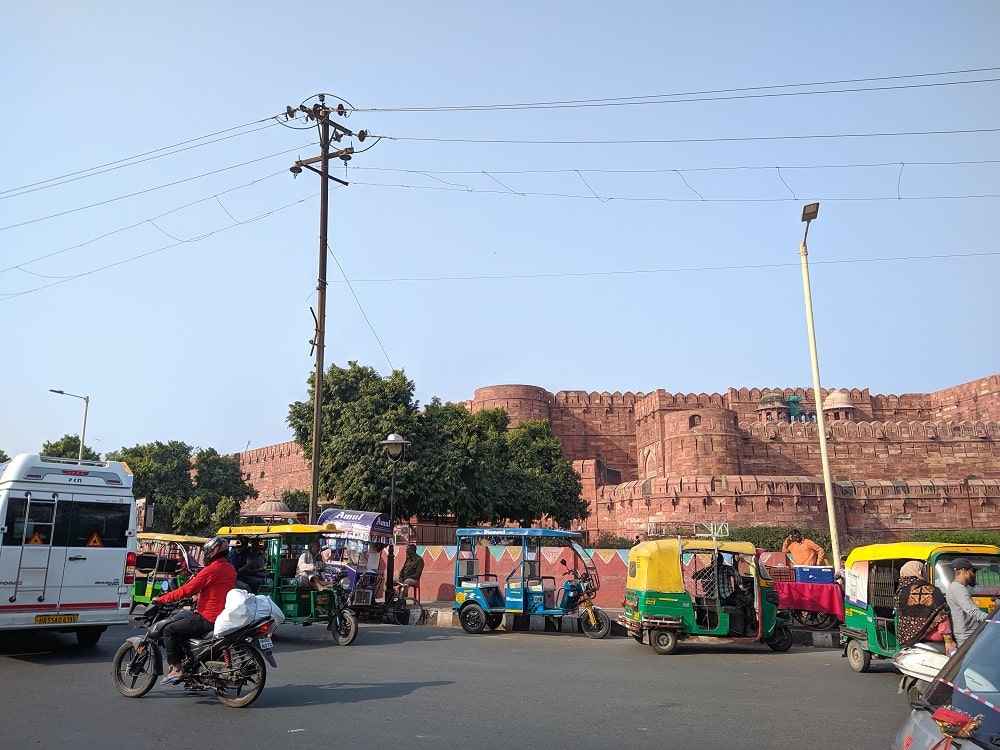Agra city is dotted with several majestic medieval monuments that it takes more than a day to explore all of them. The city shines with some famous and some not so famous sites and structures. Ruled by Mughals for a long time, Agra represents the Indo-Islamic style of architecture in most of the medieval monuments with white marble and red sandstone. Though the Mughal kings experimented and added something extra to their traditional style of architecture. One of such monuments which is a magnificent example of Mughals’ love for art and architecture is Itimad ud Daula tomb.
The tomb is the resting place of a notable person who served Akbar. The monument represents brilliant artwork and an impressive architecture plan which is mixed with Persian style. If you are a history enthusiast or someone who loves visiting ancient monuments, you will surely appreciate the beauty of Itimad ud Daula tomb the moment you lay your eyes on this glorious monument.
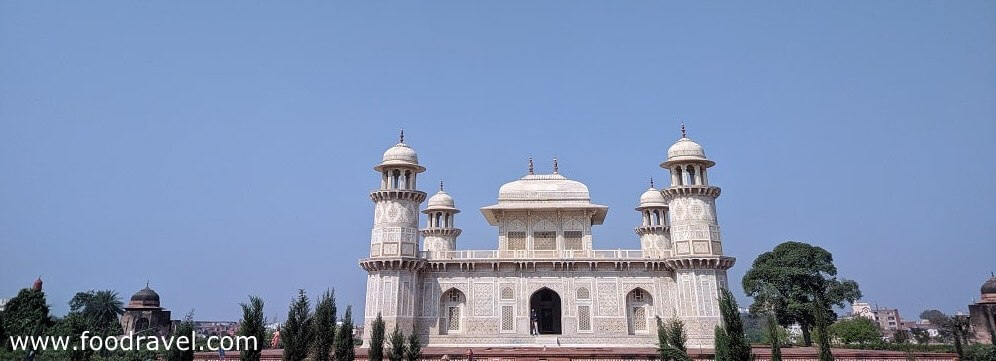
Yes, that’s right. Tomb of Itimad ud Daula is also referred to as the Mini Taj Mahal or Baby Taj Mahal or Bachcha Taj Mahal in Hindi. The reason why it is called the Mini Taj Mahal or Baby Taj Mahal because it served as the first draft for design and architecture for the Taj Mahal which is built near to it. It was built before Taj Mahal and its architecture plan resonates with that of Taj Mahal.
However, if you look closely at Humayun’s Tomb in Delhi, you will see that the tomb has a close resemblance with Taj Mahal more than Itimad ud Daula tomb. However, the chief construction material used in Humayun’s tomb was red sandstone whereas Taj Mahal is built with white marble though red sandstone is also used otherwise but the primary construction material used is white marble. The same is with Itimad ud Daula tomb which is built with white marble though the entrance gates are made up of red sandstone just like Taj Mahal. Also, the level of wall designing and carvings done at Itimad ud Daula tomb is similar to that of Taj Mahal.

Who commissioned the construction of Itimad ud Daula tomb? Story of Mirza Ghiyas Beg Tehrani
Jahangir’s wife Nur Jahan commissioned the construction of this tomb. The tomb was built for her father, Mirza Ghiyas Beg who was a Persian Amir in exile. He received the title of the pillar of the state or Itimad ud Daula by the king while he was serving in Mughal court. He was also Mumtaz Mahal’s grandfather.

It is said that he was a poor Persian merchant. His wife gave birth to a daughter when they were on their way to India. Already suffering from poverty, the poor parents thought to abandon the baby. But it was said that the baby was born with bright fortune. Somehow they reached Emperor Akbar’s court. The couple got shelter and work. Mirza became a minister in the court and was a loyal treasurer. Even after Akbar’s death, he was working with full loyalty during Jahangir’s reign. It was then that Jahangir titled him Itimad ud Daula. Later, Jahangir got married to her daughter.
History of Itimad ud Daula tomb
The tomb is constructed near the Yamuna river banks. Its architecture style strongly highlights that of Taj Mahal and thus it is also believed to be the precursor of Taj Mahal. The construction of this tomb started in 1622 and finished in 1628. The tomb houses several other graves other than Mirza Ghiyas Beg.
Architectural features of Itimad ud Daulah Tomb
This magnificent Mughal monument is known for its grandeur architecture and decoration. The most striking feature of itimad ud daulah tomb which will catch your attention if you love exploring ancient and medieval architecture plans is the baradari in the square form at the top in place a of traditional dome based on an octagonal structure which you will usually find in Mughal monuments be it Taj Mahal or Humanyun’s tomb. A dome over an octagonal structure was a prominent feature of Islamic architecture in South India. However, itimad ud daulah tomb lacks it. Moreover, you will not find a dome at Akbar’s tomb as well.
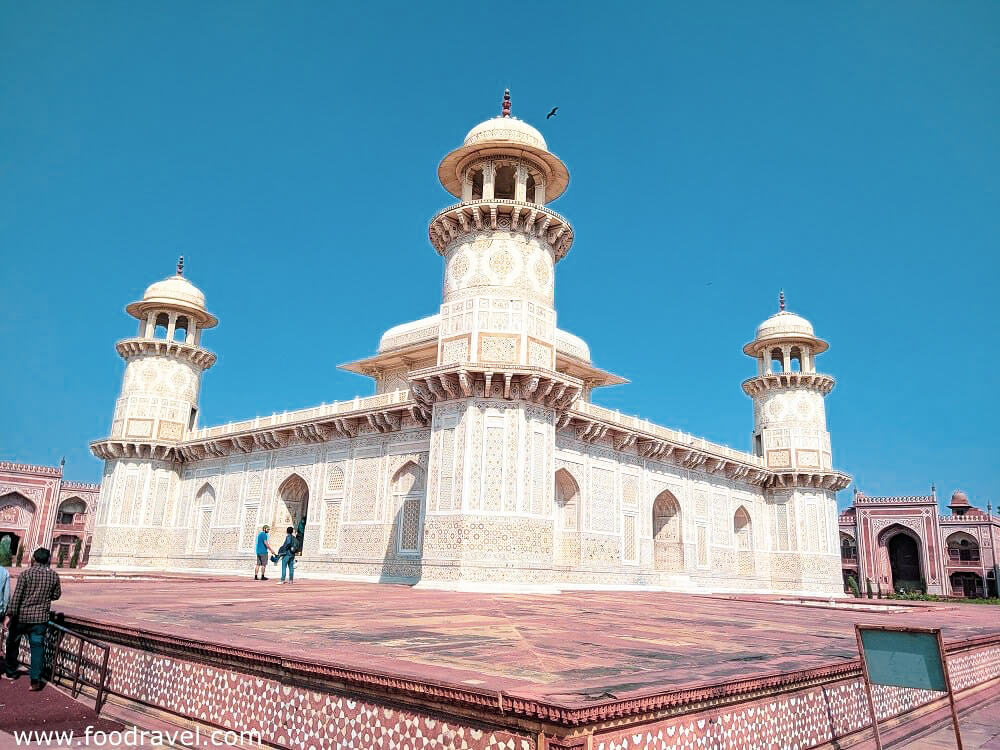
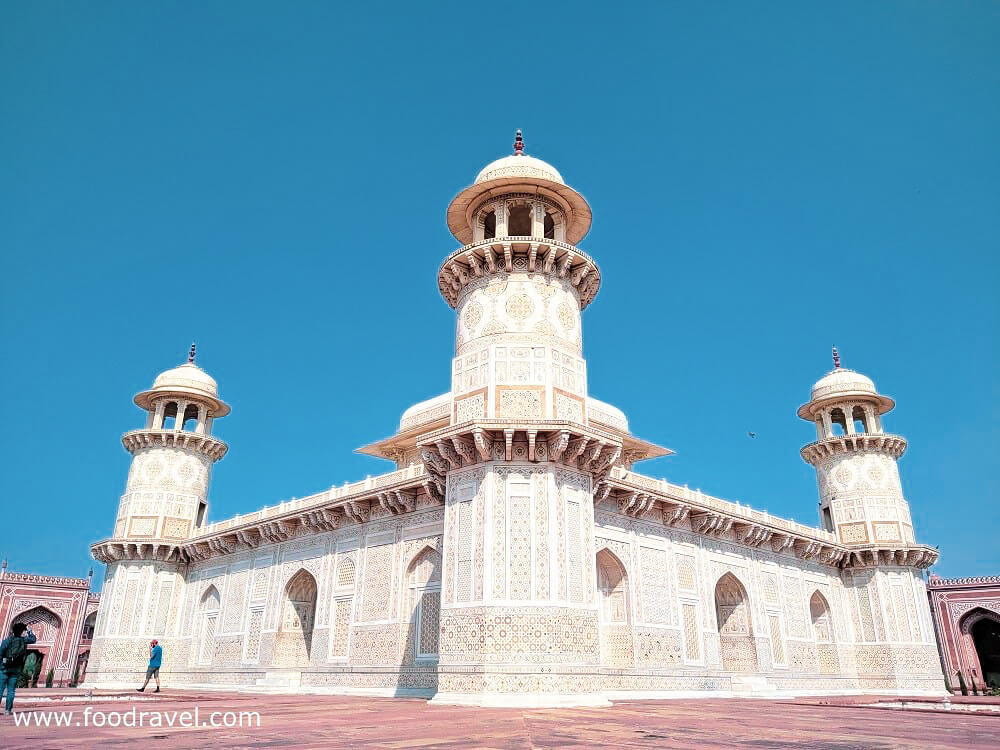
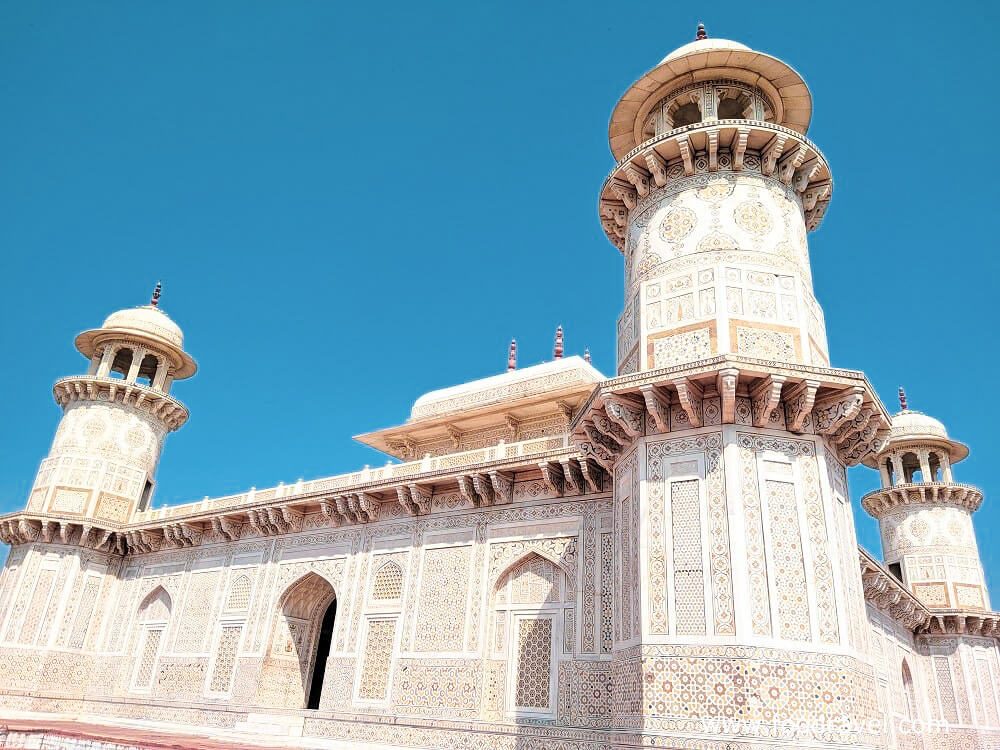
Just like most of the Mughal monuments, this one too is based on the Char Bagh (Four quartered garden) symmetry, enclosed by side structures and walls. The tomb’s main entrance lies on the east side. The side buildings and gates are built with red sandstone and are decorated with impressive inlaid designs done with white marble. The garden is divided into four equal parts.
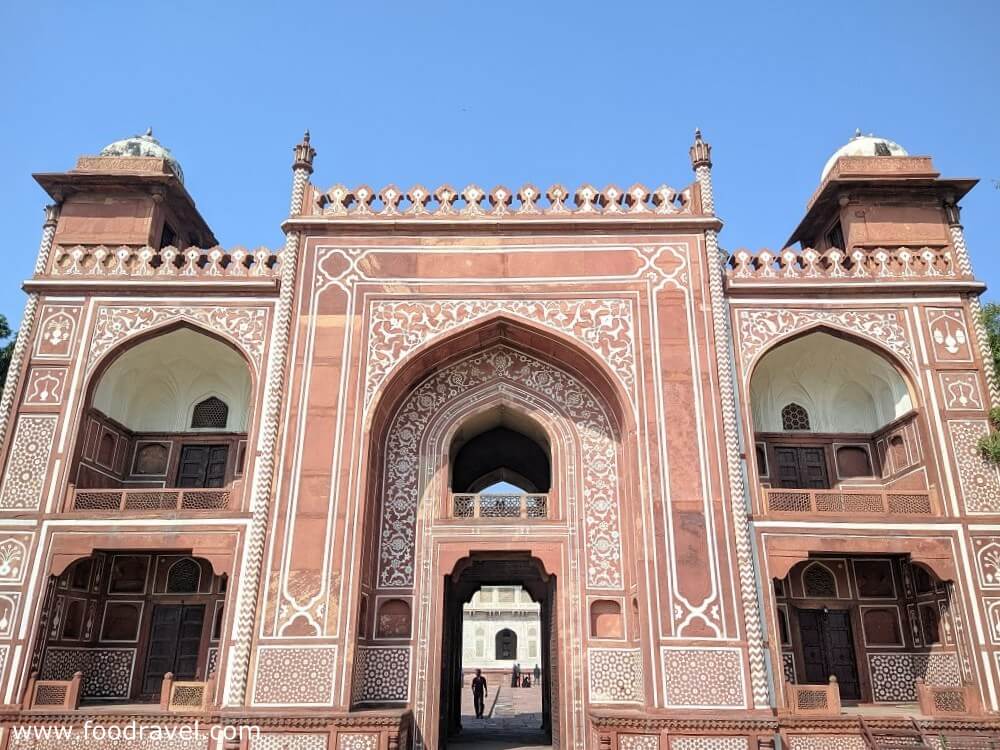

The tomb stands in the middle of the garden on the platform of red sandstone. The tomb is built square and has four towers on each corner which are octagonal. All these towers have chhatris at the top of them. There are three arches in every façade. The central façade serves as the entrance to the tomb from all the sides while the rest of the two façades are enclosed with jali (marble net).

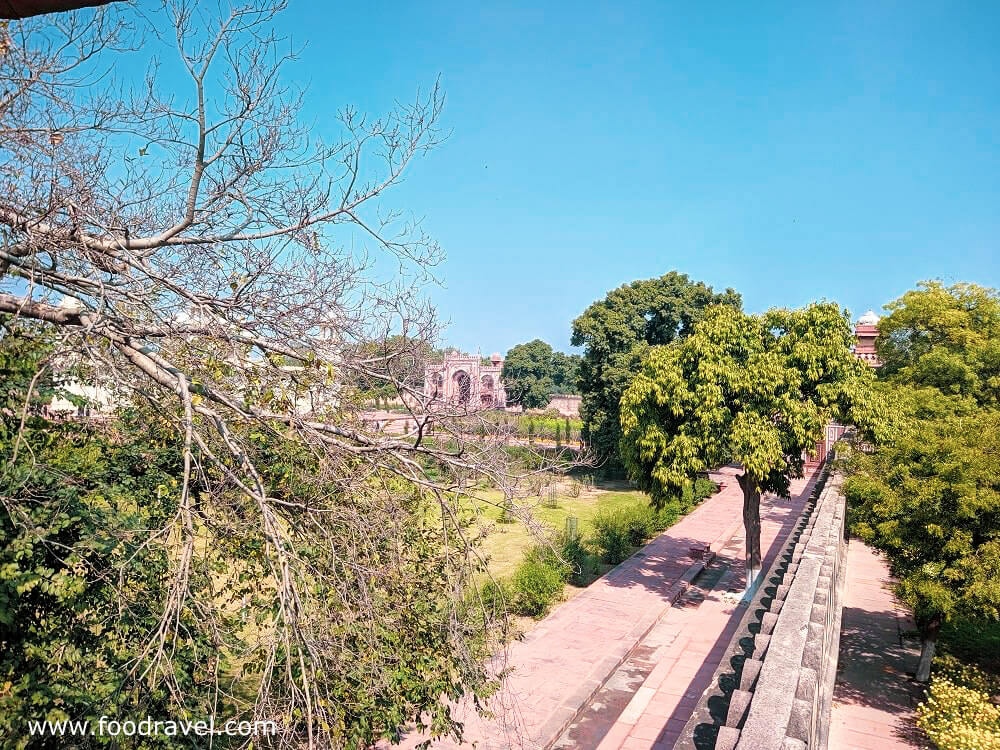
Design and Decoration – Use of Peitra Dura in Itimad ud Daula Tomb
The tomb is also referred to as Jewel Box due to its rich design and decoration along with the use of semi-precious stones embedded in the walls. The most striking impression of this tomb is how incredibly polychrome ornamentation has been used. The walls, roofs, and ceilings have been decorated with floral and geometrical shapes, as well as the arabesque. The tomb has been highly adorned with mosaic techniques and the artists have really put their hearts into creating the images of cypress, dishes, cups, wine vases, honeysuckle, flowers, etc. on the walls as well as several Iranian motifs. Some of the artwork looks like ivory embroidery.

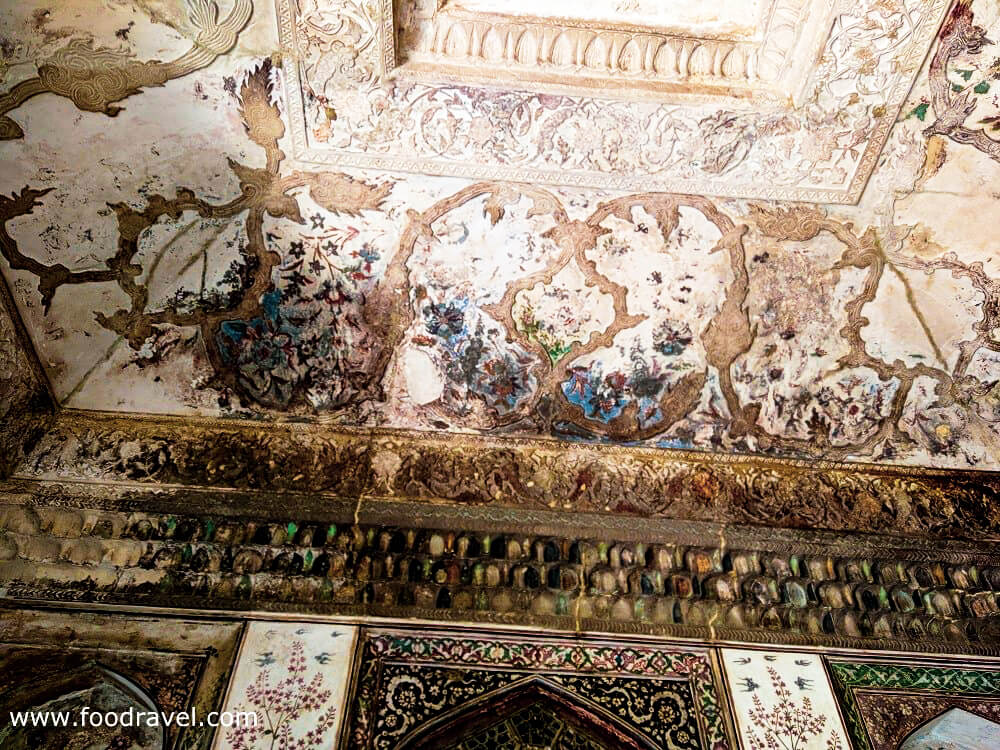


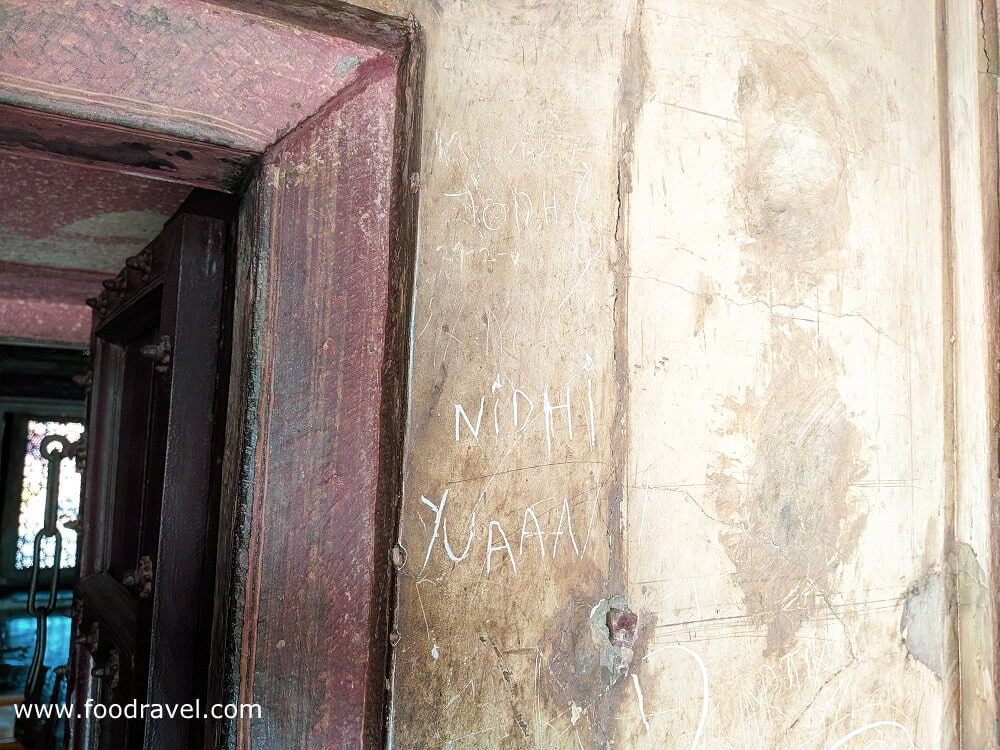
The tomb was the first Mughal monument to be decorated with the pietra dura technique, a design technique that uses semiprecious stones. The tomb’s intricate use of designing style makes it stand apart from other contemporary monuments. The tomb reflects a fine blend of Islamic and Hindu styles.
Mughals were believed to be nature lovers. Thus, the representation of plants in the design is highly influential. Their interest in botany bought several people in the court who documented the flora that flourished on the Mughal land, Ustad Mansur being one of them who was the chief court artists who documented more than a hundred flowers. Moreover, several scholars like Persian as well as Europeans also introduced and shared their knowledge of botany with the Mughals. Jahangir was known as an artist himself and had a great interest in art.
The 64th panel of the external sides has been carved with the Quran’s 73th and 48th chapters whereas the upper pavilion’s 12 internal panels have been carved with the 67th chapter.
Itimad ud Daula Tomb timings
The tomb remains open all the days of the month. The entrance for visitors opens at 6: 00 AM and closes at 6: 00 PM.
Ticket booking for Itimad ud Daula Tomb
The ticket for itimad ud daulah tomb can be easily bought from the tomb itself at the ticket counter. However, you can also book the ticket online.
- Indian visitor – 20 INR
- Foreign visitor – 250 INR
- SAARV visitor – 20 INR
- BIMSTEC visitor – 20 INR
![]()





